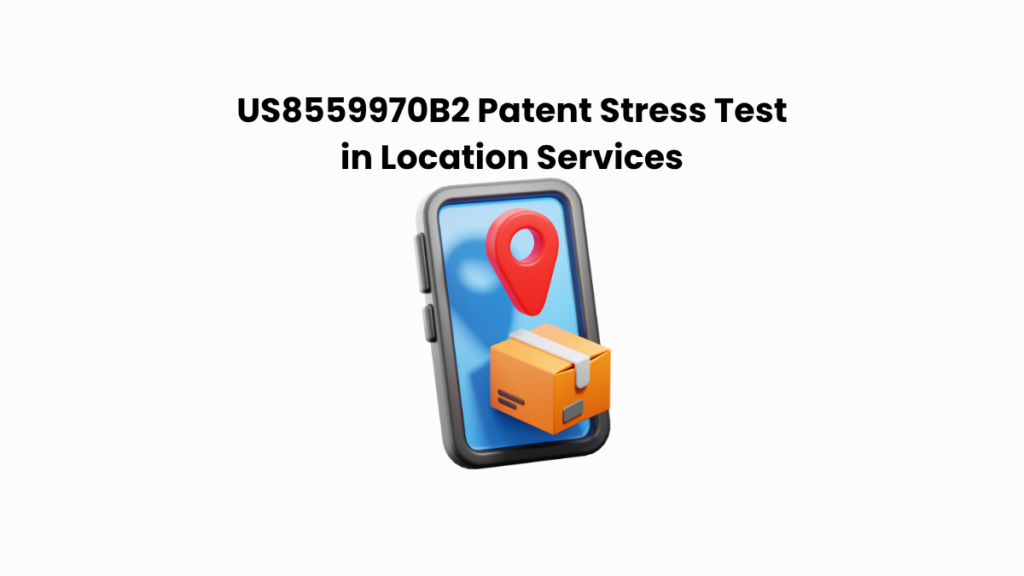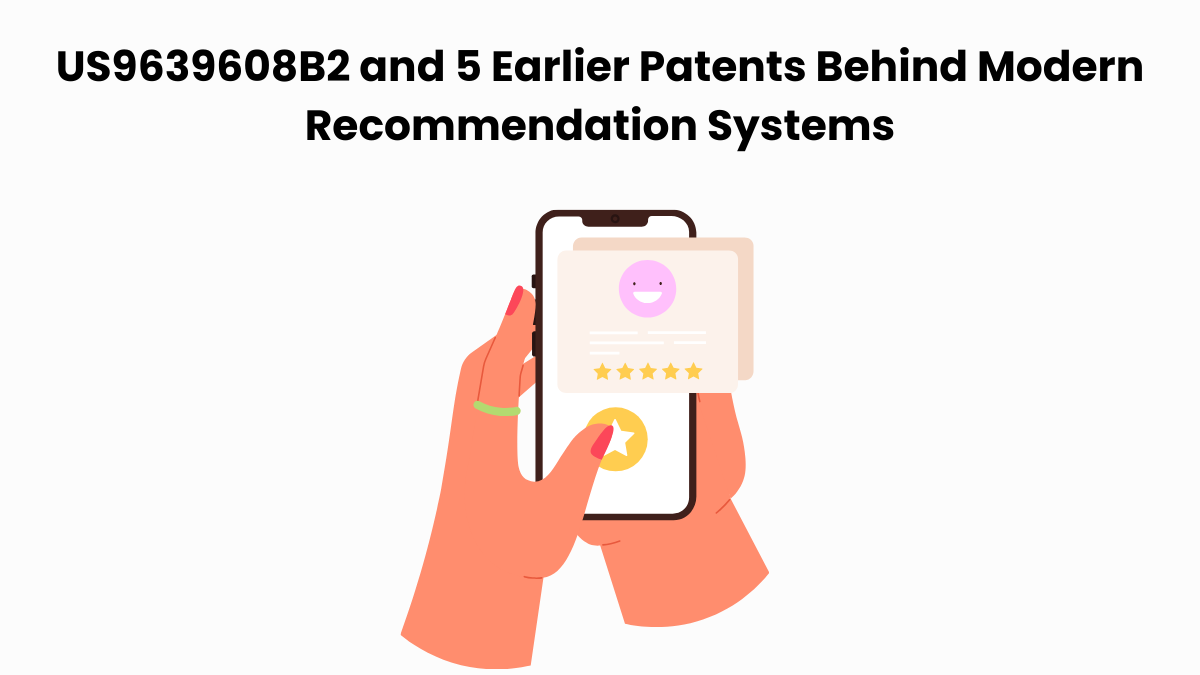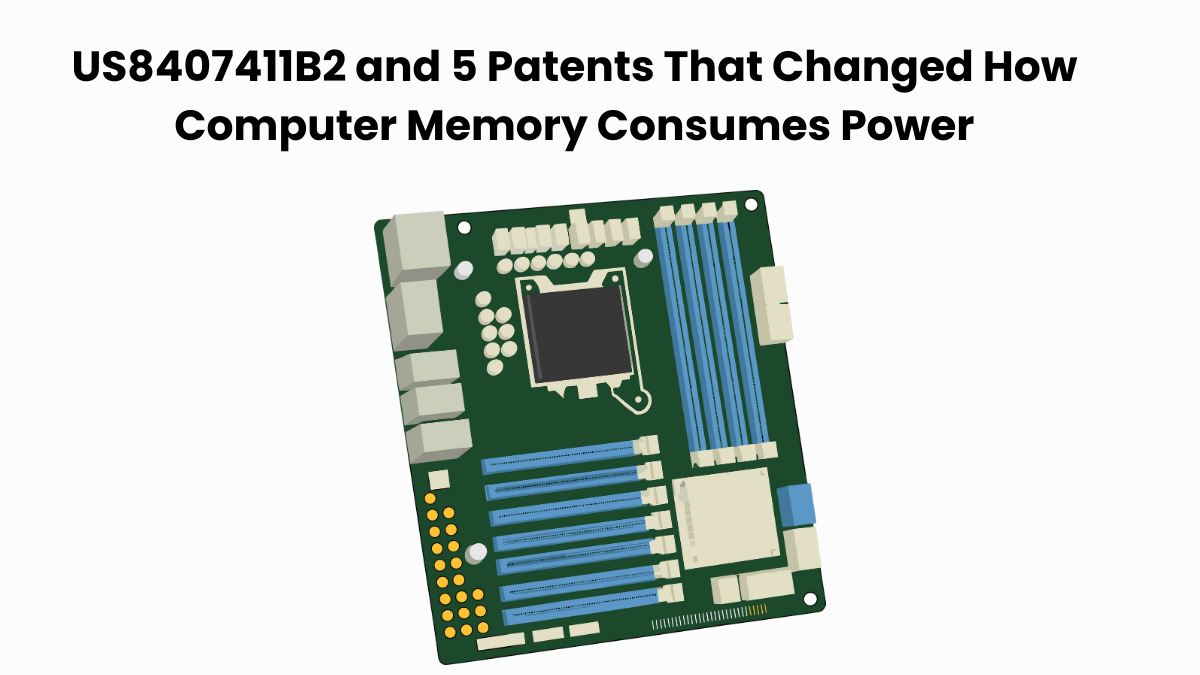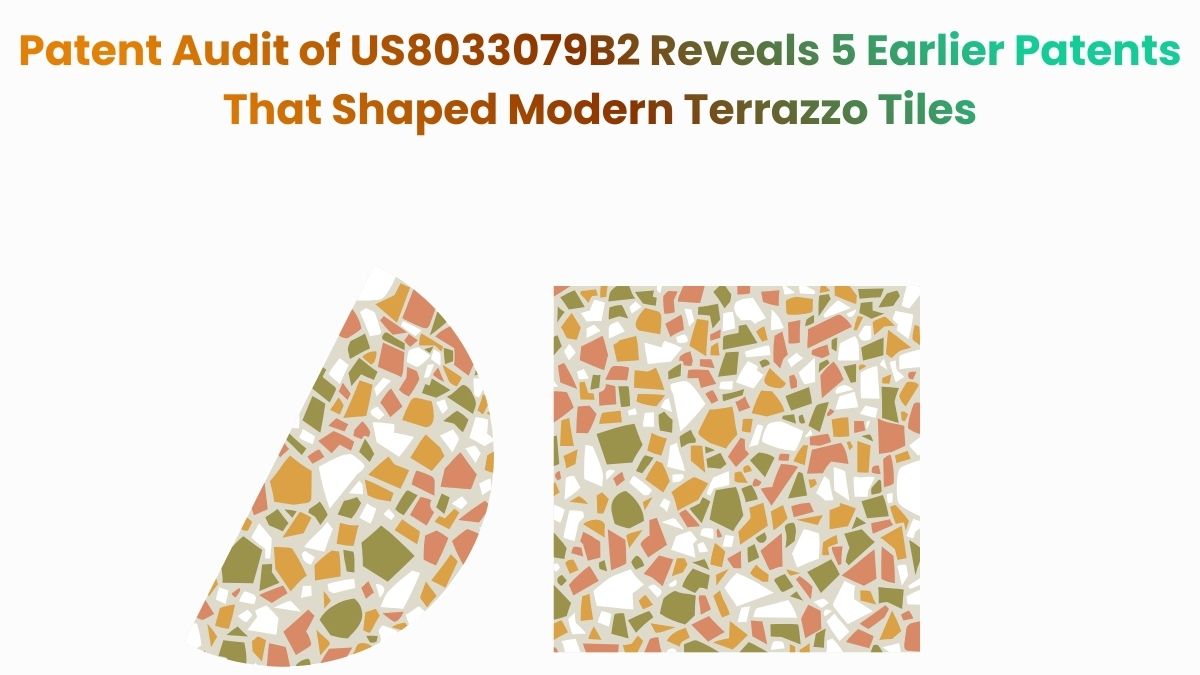Some patents blend into the background. Others stand out because they shape how digital systems work. US8559970B2 is one of those that stand out.
This patent, assigned to Nostromo LLC, focuses on delivering location-based information to users based on their preferences. Think of it as a more innovative way to serve content, where your device knows not just where you are, but also what you care about. The idea may sound familiar because it underpins many services we now take for granted, from travel apps to hyperlocal advertising.
In this article, we use the Global Patent Search (GPS) platform to explore related technologies. Our focus isn’t on litigation, but on uncovering other patents that echo the same technical themes, like user-defined preferences, position tracking, and personalized data delivery. Whether you’re researching innovation trends or tracing how location-aware services have evolved, this is a data-driven dive worth your attention.
Understanding Patent US8559970B2
Patent US8559970B2, assigned to Nostromo LLC, outlines a system and method for providing location-based information services to a portable electronic device. Conventional navigation or information systems require user-initiated queries. But this invention delivers automated, preference-based content to users based on real-time location data and preset conditions.
The system intelligently filters and pushes relevant information, such as weather, traffic, or local events, based on the user’s preferences and geographic proximity, offering a more personalized and timely user experience.
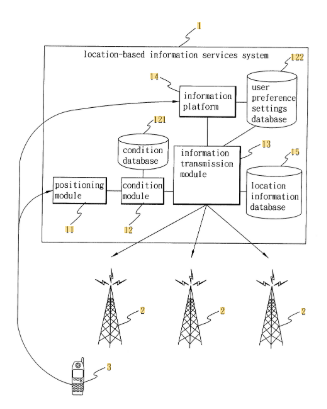
Source: Google Patents
Its Four Key Features Are
#1. User preference database: The system stores each user’s selected categories of interest (e.g., weather, traffic) and preferred location range (e.g., within 10 km).
#2. Real-time location tracking: A positioning module collects location data from the user’s device using GPS or base station triangulation (learn more about the invention of GPS and how it powers today’s location-aware systems).
#3. Trigger-based information delivery: Location-based information is pushed only when certain conditions are met, such as entering a new area, reaching a set time, or a relevant event occurring.
#4. Automated, context-aware transmission: Once triggered, the system selects relevant location-based information and transmits it automatically to the device via wireless or base station networks.
This patent plays a foundational role in context-aware mobile systems, particularly those that combine user preference filtering with automated data delivery.
By studying US8559970B2, researchers and IP professionals can explore how personalized, geosensitive services have evolved on mobile platforms. Identifying similar architectures or mechanisms in earlier patents can help assess novelty, overlap, or influence in this rapidly growing domain.
Similar Patents As US8559970B2
To explore the innovation landscape surrounding US8559970B2, we ran the patent through the Global Patent Search (GPS) tool. Below is a quick glimpse of the GPS tool in action:
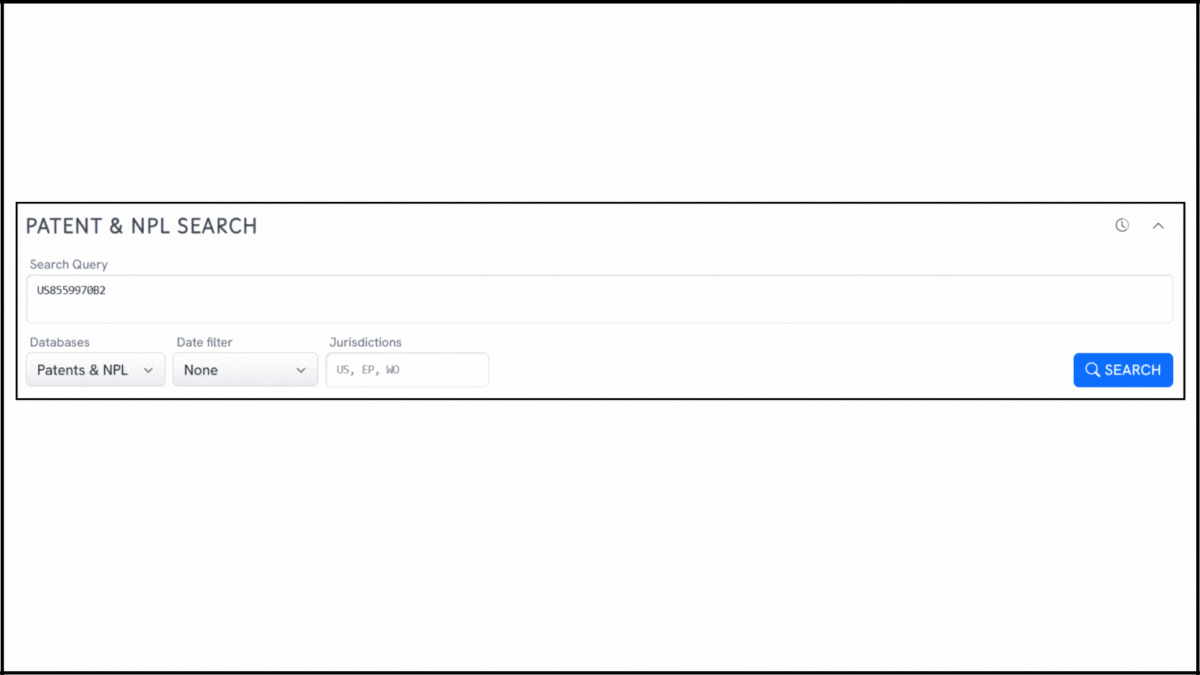
Source: Global Patent Search
Here is a glimpse of how GPS identifies semantically related patents based on conceptual overlaps in functionality and design. This search surfaced a number of patents dealing with location-based services, user-triggered notifications, and real-time data transmission. Below, we highlight five such references that share significant similarities with the core ideas behind US8559970B2.
#1. US20070015521A1
This US patent, US20070015521A1, published in 2007, introduces a system for correlating mobile device activities with geographic location. It outlines how real-time location data can trigger keyword-driven responses and custom notifications for mobile users.
Below, we have added snapshots from the GPS tool highlighting the relevant snippets from the specification for the similar patents.
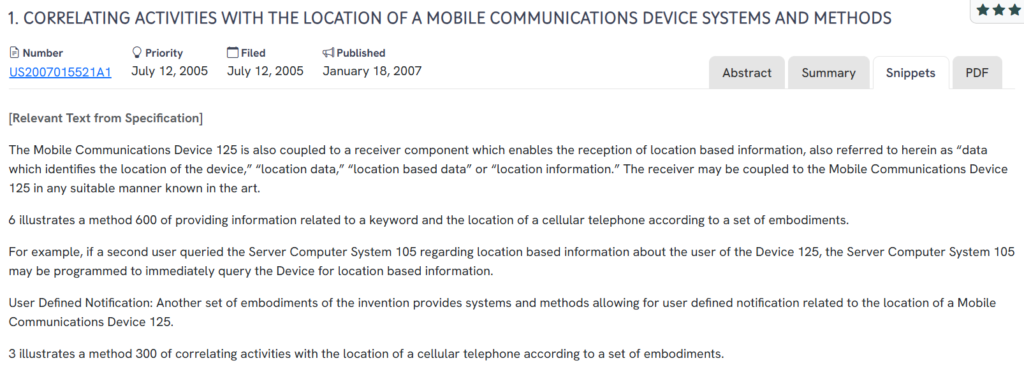
What This Patent Introduces To The Landscape
- Mobile location data reception: The mobile device features a receiver that collects location-based data in real-time.
- Server-initiated location queries: External systems can request the current location of a device, enabling responsive, on-demand location tracking.
- User-defined location notifications: Users can configure notifications tied to specific geographic triggers or behavioral criteria.
- Activity-location correlation engine: The system maps user actions (such as keyword searches) to physical locations for contextual data delivery.
How It Connects To US8559970B2
- US8559970B2 also relies on real-time location data to serve personalized content to users.
- While US8559970B2 emphasizes pre-set user preferences and passive information delivery, US20070015521A1 focuses on responsive data exchange and activity tracking.
- Both systems share the core concept of tailoring mobile services based on user location.
Why This Matters
This reference highlights early approaches to context-aware services, using mobile location data as a trigger for delivering targeted content. It complements US8559970B2 by reinforcing the importance of location sensitivity and personalization in next-generation mobile experiences.
#2. US20060105781A1
This US patent, US20060105781A1, published in 2006, outlines a method and system for delivering location-based information to mobile communication terminals. It focuses on automating content delivery by syncing with device behavior and dynamically adjusting data distribution based on content size and user position.
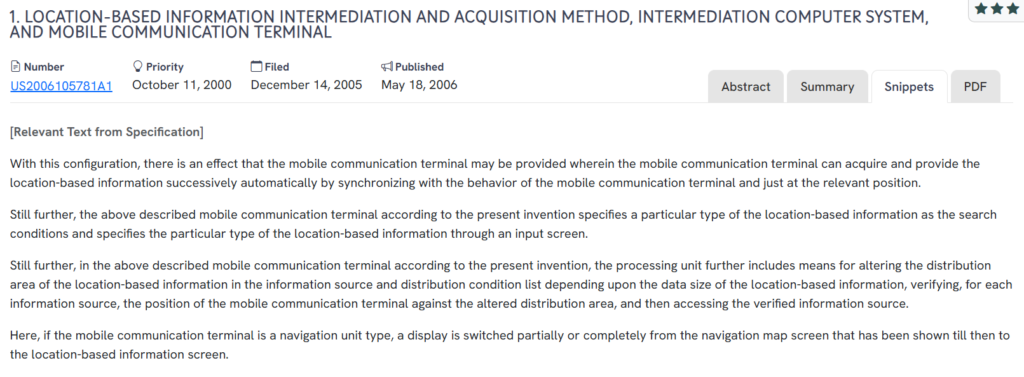
What This Patent Introduces To The Landscape
- Automatic, behavior-synced content delivery: The system enables location-based data to be pushed automatically to the mobile terminal based on its behavior and current location.
- Search customization via input screen: Users can define specific types of location-based information as search criteria through a dedicated input interface.
- Dynamic distribution zone adjustments: The distribution area for information delivery is adjusted in real time based on content size and the device’s current location.
- Context-aware display switching: For navigation-type terminals, the screen can automatically switch from a map view to relevant location-based content.
How It Connects To US8559970B2
- Both systems automate the delivery of location-specific content based on user input and device position.
- US8559970B2 emphasizes user preferences and condition-based triggers, while US20060105781A1 adds real-time behavioral syncing and display adaptation.
- Each patent aims to deliver timely, relevant information without requiring manual requests.
Why This Matters
This reference illustrates how mobile devices can move beyond static navigation to become interactive, adaptive information hubs. It aligns closely with the vision of US8559970B2 by reinforcing the role of personalization, automation, and spatial context in location-based services.
#3. KR20030039035A
This Korean patent, KR20030039035A, published in 2003, describes a mobile-based method for providing local information services by using real-time location data. It focuses on helping users identify nearby points of interest through a streamlined request and response process.

What This Patent Introduces To The Landscape
- User-initiated local search via keypad input: Users manually input search queries for nearby locations (e.g., OA points) using a mobile device interface.
- Simultaneous location calculation and data request: The system determines the terminal’s current position while processing the user’s information request.
- Proximity-based search and delivery: The server identifies the closest relevant location and sends key details, such as name, distance, and contact number, to the terminal.
- Display-friendly data formatting: The information is tailored to suit smaller screens, offering precise, actionable results even without a map interface.
How It Connects To US8559970B2
- Both patents rely on a combination of location tracking and user input to deliver relevant geographic content.
- US8559970B2 automates delivery based on user preferences, while KR20030039035A uses direct, on-demand requests.
- Each supports the goal of providing personalized, location-specific results to mobile users.
Why This Matters
This reference underscores the importance of user-centered, location-based data retrieval in mobile systems. It complements US8559970B2 by showing how real-time position awareness can be used to serve relevant local information, whether automatically or on request. This mirrors the user-controlled experience seen in wearable technology, especially fitness trackers that rely on similar geo-personalized interactions.
#4. JP2003099350A
This Japanese patent, JP2003099350A, published in 2003, presents a method for delivering location-based services using various forms of position data. It is designed to work with mobile terminals, even in conditions where GPS is unavailable, by leveraging both base station and alternative positioning sources.
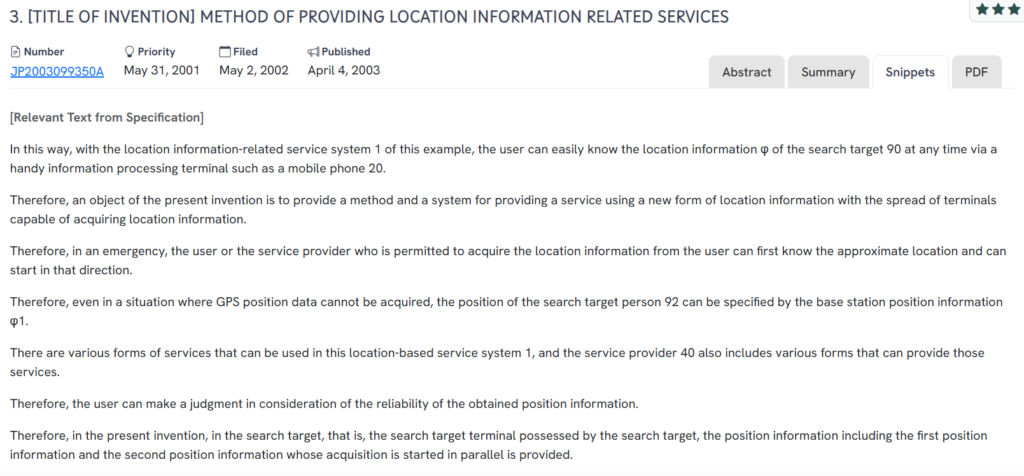
What This Patent Introduces To The Landscape
- Multi-source location detection: Combines GPS and base station data to determine a device’s position, allowing services to function even when GPS signals are unavailable.
- Search target tracking in emergencies: Enables service providers or authorized users to locate individuals in critical situations using real-time location data.
- Mobile-terminal delivery platform: Information is sent directly to user devices such as mobile phones for on-the-go accessibility.
- Reliability assessment of location data: Allows users to consider multiple data sources and assess the trustworthiness of received location information.
How It Connects To US8559970B2
- Both patents support location-aware service delivery via mobile terminals.
- JP2003099350A emphasizes redundancy and reliability in position detection, while US8559970B2 focuses on customized information delivery based on user preferences.
- Each aims to ensure continuous access to location-driven content, even under challenging network conditions.
Why This Matters
This reference highlights the importance of resilient location tracking technologies in expanding the usability of mobile services. By incorporating multiple positioning methods it adds a layer of robustness that complements the user-centric delivery model in US8559970B2.
#5. JP2006109355A
This Japanese patent, JP2006109355A, published in 2006, describes a system and method for enabling mobile phones to acquire and display position-related information from external sources using network-based location services.

What This Patent Introduces To The Landscape
- Mobile-based location retrieval system: The mobile terminal obtains position-related information from an external server via a communication network.
- Dual-source position acquisition: The mobile device includes both a first and second position acquisition unit, enhancing accuracy through comparison.
- On-device display of retrieved data: The acquired position-related content is displayed directly on the mobile terminal for immediate user access.
- Accuracy assessment mechanism: The system evaluates and compares the precision of different location sources before presenting the result.
How It Connects To US8559970B2
- Both inventions use location data to trigger the delivery of relevant information to mobile devices.
- JP2006109355A emphasizes accuracy verification and multi-source acquisition, while US8559970B2 focuses on preference-based filtering and automated delivery.
- Each patent supports the broader goal of context-aware mobile information access.
Why This Matters
This reference reflects continued efforts to improve the precision and usability of location-based services. It aligns with US8559970B2 by emphasizing mobile delivery, while also enhancing the model through redundant sourcing and data verification. These are key to ensuring service reliability in real-world applications.
How To Find Related Patents Using Global Patent Search
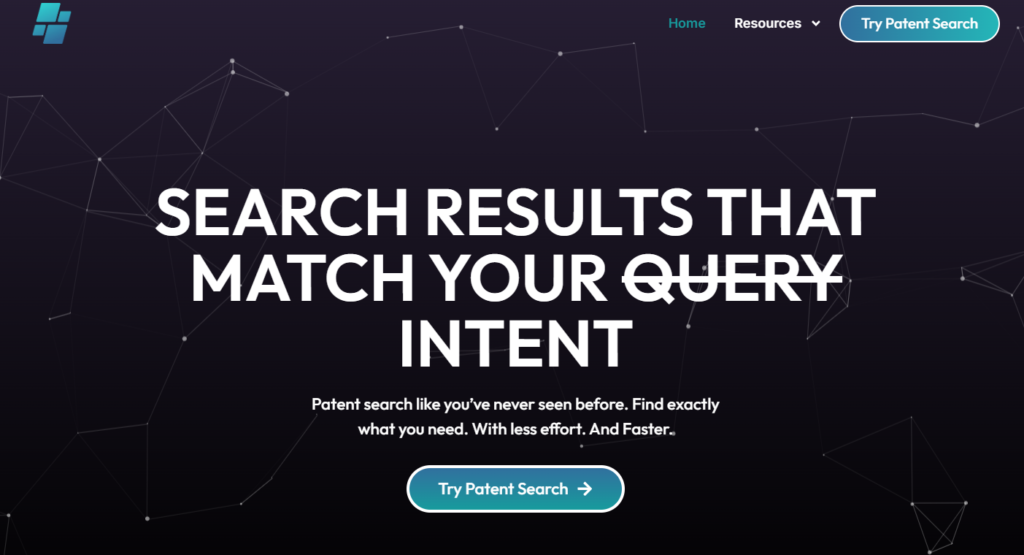
Understanding the broader patent landscape is essential when exploring technologies in location-aware content delivery, mobile user preferences, or geo-personalized services. The Global Patent Search tool streamlines this process by enabling users to identify systems that reflect similar ideas in real-time positioning, mobile customization, and information distribution.
1. Enter the patent number into GPS: Start by entering a patent number like US8559970B2 into the GPS tool. The platform converts it into a smart search, which can be refined using terms like location-based information, mobile terminal services, or personalized data delivery.

2. Explore conceptual snippets: Instead of performing claim-by-claim comparisons, GPS now delivers curated text snippets. These highlight how other systems handle position tracking, content filtering, or location-triggered notifications.
3. Identify related inventions: The tool surfaces patents that address context-aware alerts, device-specific content, or automated service triggering, revealing how similar problems have been solved over time.
4. Compare systems, not legal claims: Rather than focusing solely on legal terminology, GPS compares how systems behave and interact. This helps users uncover functional overlaps without navigating complex claim language.
5. Accelerate cross-domain insights: Whether you’re working in mobile UX design, smart city platforms, or context-driven information delivery (like smart speaker systems that respond to voice and location inputs), GPS enables you to explore conceptual connections across domains that might otherwise go unnoticed.
With this approach, Global Patent Search gives developers, IP researchers, and strategy teams a clear, concept-first path to discover related innovations and inform better decisions.
Disclaimer: The information provided in this article is for informational purposes only and should not be considered legal advice. The related patent references mentioned are preliminary results from the Global Patent Search tool and do not guarantee legal significance. For a comprehensive related patent analysis, we recommend conducting a detailed search using GPS or consulting a patent attorney.

